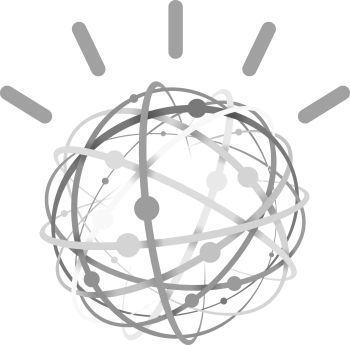
Over the past few years, IBM has been devoting a great deal of corporate energy into developing Watson, the company’s Jeopardy-beating supercomputing platform. Watson represents a larger focus at IBM that integrates machine learning and data analytics technologies to bring cognitive computing capabilities to its customers.
To find out about how the company perceives its own invention, we asked IBM Fellow Dr. Alessandro Curioni to characterize Watson and how it has evolved into new application domains. Curioni, will be speaking on the subject at the upcoming ISC High Performance conference. He is an IBM Fellow, Vice President Europe and Director IBM Research – Zurich Research Laboratory, Switzerland.
Artificial intelligence has undergone something of a renaissance over the last several years. While much of the industry has settled on the term machine learning, IBM likes to talk about cognitive computing. Is there a difference in either definition or technical approach?
Curioni: Artificial intelligence is generally defined as a computing system that simulates or recreates the human brain. Cognitive computing and Watson, on the other hand, is not designed to replace human intelligence, but to work in tandem with people.
People can read, understand and use reasoning skills to make decisions, and Watson uses the same techniques to do something similar at a larger scale. Watson is performing statistical analysis on a corpus of data, looking for patterns, defining relationships between that data and forming hypothesis to help people make better decisions.
While cognitive computers have a big advantage over people—the ability to consume massive amounts of information—they don’t have the level of judgment that we have, or the ability to understand the implications and outcomes of decisions. That’s why Watson is designed to work with people to give them better insights.
Let’s zero in on Watson. Can you characterize the scope of this effort at IBM today: lines of code, number of people working on it, and so on?
Curioni: Since its triumph on the television quiz show Jeopardy!, IBM continues to add and stretch the boundaries of what Watson can do. In January 2014, IBM launched the IBM Watson business unit, investing $1B dedicated to developing and commercializing cloud-delivered cognitive computing technologies.
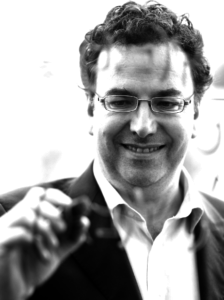
Delivered via the cloud and more than 30 APIs, today Watson is being used by more than 80,000 developers and an entrepreneur community through an open development environment – now offering the most advanced and diverse platform for developers and businesses to build apps with cognitive technology. In fact, IBM has also allocated $100 million for venture investments to support this community of start-ups and businesses building cognitive apps powered by Watson. Companies that have received funding include: Welltok, Fluid, Pathway Genomics, Modernizing Medicine, Sellpoints and Wayblazer.
In addition to the Watson business unit, in September 2015 we announced Watson Health, dedicated to improving the ability of doctors, researchers and insurers to surface new insights from the massive amount of personal health data being created and provide turnkey solutions to deliver personalized healthcare. Watson Health is based in Cambridge, Mass with 2,000 IBMers supporting the unit around the world
More recently, this past December we launched the Watson IoT, focused on making sense of data embedded in for more than 9 billion connected devices operating in the world today, which generate 2.5 quintillion bytes of new data daily. The new headquarters in Munich, Germany, will bring together 1,000 IBM developers, consultants, researchers and designers to drive deeper engagement with clients and partners, and will also serve as an innovation lab for data scientists, engineers and programmers building a new class of connected solutions at the intersection of cognitive computing and the IoT.
In addition to my role as VP of IBM Research in Europe, I am also the research lead for the Watson IoT, where I look for technologies from our labs to commercialise and grow the unit.
How has Watson advanced since its debut in 2011? Has it gotten “smarter”or just expanded its repertoire of applications?
Curioni: The original Watson was one Q&A system running on IBM Power 750 Servers , today Watson is dozens of APIs available for anyone to use via the IBM Watson Developer Cloud. In addition, in 2011 Watson was only text based and today Watson has learned to recognise images as well, particularly for the healthcare, where Watson can help diagnose certain diseases of the heart and breast based on medical images.
Today hundreds of clients and partners across 36 countries and more than 29 industries have active projects underway with Watson, which train Watson based on industry data. The system is also learning new languages such as Arabic, Spanish, Brazilian Portuguese and Japanese, with plans to add more languages in the future.
Which application domains will Watson be able to make the biggest impact in, that is, be a transformational technology?
Watson has expanded to a variety of areas – healthcare, financial services, law, retail, education and it’s incredibly transformational because now these organizations can offer their clients tailored services, which weren’t possible before.
For example:
Hilton Hotels is piloting “Connie”–the first Watson-enabled robot concierge in the hospitality industry. Connie draws on domain knowledge from Watson and WayBlazer to inform guests on local tourist attractions, dining recommendations and hotel features and amenities.
KPMG is using Watson to transforming the firm’s ability to deliver innovative and enhanced business services.
In the US Department of Veterans Affairs, doctors will use Watson to help treat veterans suffering from post-traumatic stress disorder.
The Metropolitan Health (South Africa) is leveraging Watson as an assistant to their call center agents, enabling them to more quickly respond to members’ health and insurance questions.
Sanofi is exploring how Watson can speed up the discovery of alternate applications for existing drugs.
Johnson & Johnson is collaborating with IBM to develop a new generation of intelligent virtual coaching solutions and applications that span consumer wellness and chronic condition management designed to transform the patient experience and deliver improved health outcomes.
ANZ Global Wealth (Australia) is using the Watson Engagement Advisor Tool in its Sydney ‘Grow’ center to observe the types of questions coming from both customers and financial advisors
From a hardware perspective, where is Watson running today? Is it all on IBM infrastructure?
Curioni: Yes, Watson runs on on IBM Power chips and on our Softlayer infrastructure which offers it as a cloud service via the IBM Watson Developer Cloud. In fact, at the OpenPower’s Accelerating Innovation event in Austin last November, we previewed the next iteration of our cognitive computing system architecture, integrating the Nvidia Tesla Accelerated Computing Platform into Watson’s core technologies. The incorporation of Nvidia flagship Tesla K80 GPU accelerators – coupled with the Watson’s Power-based architecture – accelerates Watson’s retrieve and rank capabilities to 1.7x of its normal speed. This fuels our drive to further improve our cost-performance of Watson’s cloud-based services.
In addition to bolstering response time, the GPU acceleration also increases Watson’s processing power to 10x its prior performance. Watson often requires a lot of compute power and time to digest, annotate and index large quantities of data to prepare it to perform its cognitive tasks. Nvidia’s Tesla GPUs will accelerate the time it takes the cognitive computing system to process this information to enable it to interact in natural language.
The combination of IBM Power architecture and Nvidia’s Tesla Platform will also facilitate the expansion of Watson’s deep learning functionality. Hardware acceleration is integral to Watson’s ability to deeply reason about vision and speech recognition – in a short period of time.
Your company appears to making a big bet on Watson for its cognitive computing thrust. Are there other AI-type technologies that IBM is developing for commercial use?
Curioni: From a software perspective, Watson is our cognitive platform, but we are developing hardware technologies to help complement machine learning.
For example, we recently announced the first client for our breakthrough neurosynaptic computer chip called IBM TrueNorth. TrueNorth can process the equivalent of 16 million neurons and 4 billion synapses and consume the energy equivalent of a tablet computer – a mere 2.5 watts of power for the 16 TrueNorth chips. The brain-like, neural network design of the IBM Neuromorphic System is able to infer complex cognitive tasks such as pattern recognition and integrated sensory processing far more efficiently than conventional chips, making it an ideal technology for cognitive computing applications.


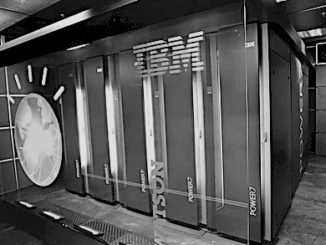
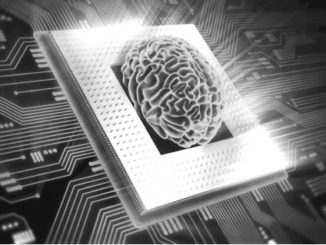
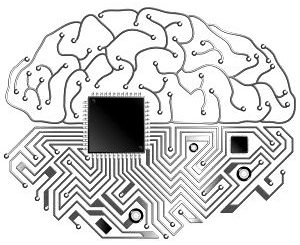
Be the first to comment